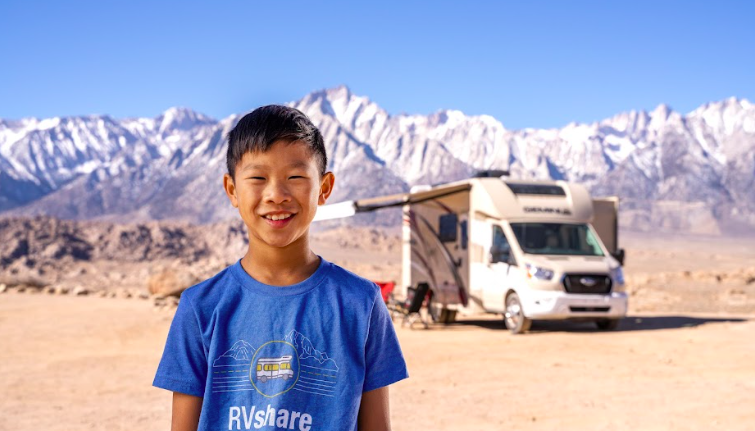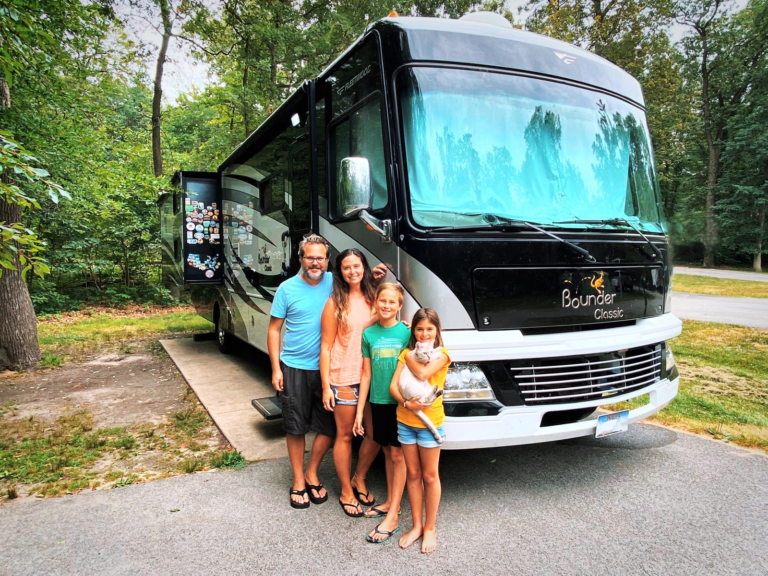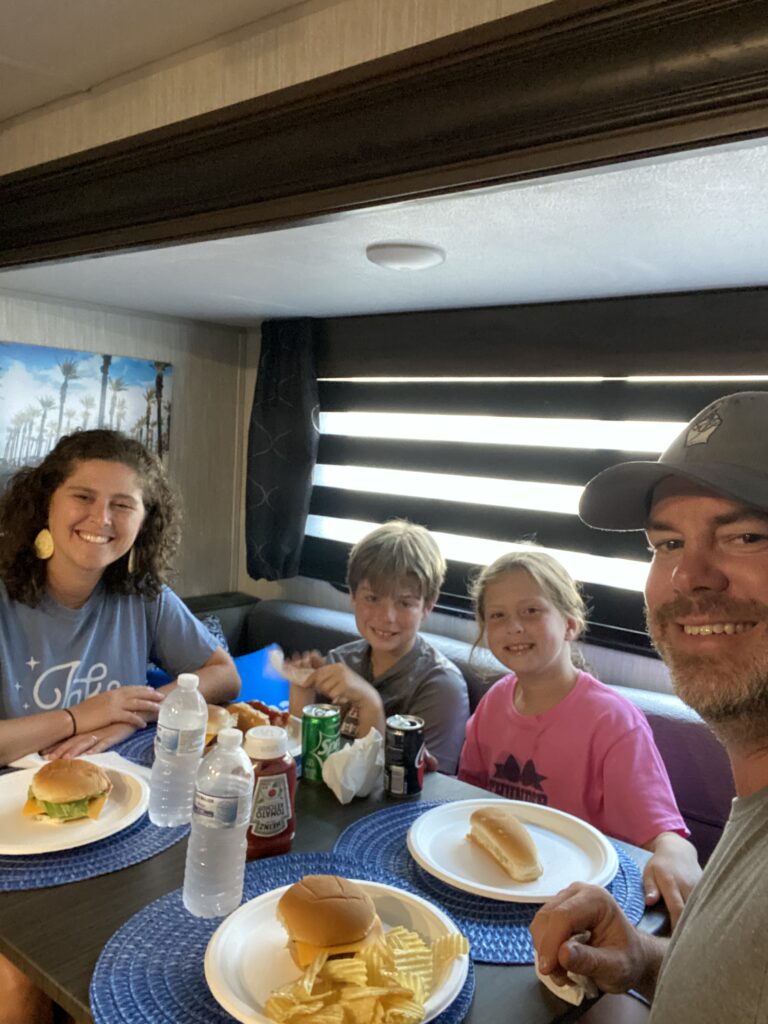
Perhaps one of the greatest ways to spend time as a family is in an RV. You avoid the constant packing and unpacking, moving between hotels, you don’t have to cram everyone into a small space for long periods of time, and best of all, everyone feels like they’re at home!
Even with all of the advantages of RV travel with kids, it’s important to keep safety in mind.
Sure, it’s great that the kiddos can spread out and get comfortable while Mom or Dad are tooling down the road, but what safety precautions should you take into account for the kids while riding in a motorhome?
Here are 5 things you need to know about safe RV travel with kids.

1. The Type of RV You Have Matters
Class B & C motorhomes are built on the base of a commercial-type truck or van chassis with the same front driver’s area, or cockpit, so these types of motorhomes adhere to the same type of safety requirements that typical trucks and vans must adhere to, at least in the driver’s area.
These types of requirements do not carry over to Class A RVs because of the difference in how they are built. Consult the safety features of your individual RV to understand the safety and restraint features that it is equipped with to determine if it’s safe for traveling with kids.
2. Remain Seated
While traveling with kids in an RV, with all of its amenities, comforts, and room to spread out, it’s sometimes easy to forget that you are, in fact, riding in a moving vehicle. Even though an RV is equipped with the comforts of home, you must remember that turns, bumps, braking, and unexpected movements can cause things in your RV to fall, or cause cabinets to open.
For this reason, it’s important to make sure that your kids stay seated while the RV is in motion. It might be tempting for the kids to jump up and run across the living room when they’re sitting on the couch playing games on an iPad, but it’s just not safe when the living room is going down the highway at 60 miles an hour.
Make sure your kids stay in their seats.
3. Buckle Up
Most RVs are equipped with seat belts within the living area of the coach, and they typically indicate the best seats to ride in while the RV is in motion. These seatbelts can typically be found either in the dinette area, in the cushions of a couch, or perhaps in an RV chair or recliner that is secured to the floor.
Kids riding in the living area of the RV, in addition to being seated at all times when the RV is moving, should also be buckled up at all times while seated.
It’s also important to note that, although your RV comes with seat belts installed, these seat belts are NOT required to comply with federal standards for seat belts in the same way as cars. While vehicle seat belts are required to be fastened to the frame of the vehicle, RVs do not fall under the same requirement. Seat belts in an RV may only be secured to the floor or wall, so be sure to understand where your seat belts are fastened. Be sure to check the RV seat belt laws by state.

4. Car Seats
While it’s difficult to find any specific information about RV car seat laws, you should ALWAYS follow federal recommendations for what size child should ride in a car seat and where car seats should be placed.
Also, be sure to follow the instructions of your car seat’s manufacturer when securing it to a seat — whether it be in a passenger car or RV. Child safety seats should generally not be used in a side-facing seat or any seat that may turn or swivel.
Although it is generally recommended that children do not ride in the front seat of passenger vehicles, while inspecting your individual RV, you may find that the front passenger seat provides the safest option for your child and his or her car seat.
Many child safety seats require a shoulder harness in addition to a lap belt, and in many RVs only the driver’s and immediate passenger seat provide this level of restraint.
5. Riding in a Passenger Vehicle May be the Safest
Depending on the age, size, and number of your children, in comparison to the available safety restraints in the motorhome you are looking at, you may end up determining that having your children in a passenger vehicle is the safest option.
With this in mind, your options are to drive a second vehicle so that any kids traveling with you can be restrained properly in passenger seats.
Another option is to consider a pull-behind RV, such as a travel trailer or fifth-wheel, instead of a motorhome.
With a pull-behind RV, you get the same comforts of having an RV to live in when at your campsite, but you also get all of the safety features that are inherent in your passenger car, truck, or van.
Traveling as a family to enjoy RVing is a wonderful adventure. It creates lasting memories and a lifetime of close relationships. But it’s important to make sure that you keep everyone, especially children, safe and secure.
Now go hook up that RV, strap in the kids, and hit the road! And be sure to share this article with anyone you know who may be considering RV camping with kids.
